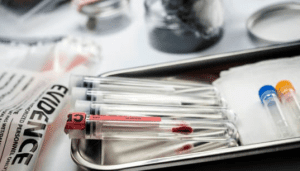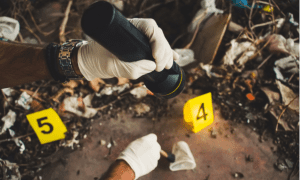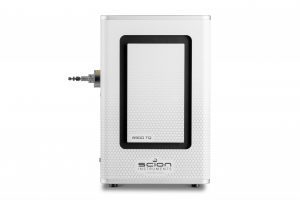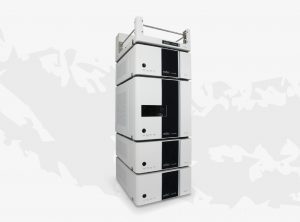The Use of Chromatography In Forensic Science
Forensic science is a branch of science that encompasses various scientific disciplines and methodologies to investigate crimes and provide scientific evidence in legal proceedings. It involves the application of scientific knowledge and techniques to collect, analyse, and interpret physical evidence found at crime scenes. The primary goal of forensic science is to uncover the truth and assist in the administration of justice.1 Forensic science plays a significant role in helping law enforcement agencies solve crimes, identify perpetrators, exonerate the innocent, and contribute to the overall pursuit of justice.
One valuable tool commonly employed in forensic science is chromatography, which comes in several types, each with its own specific applications.

Gas chromatography coupled with mass spectrometry and liquid chromatography are particularly crucial chromatographic techniques in forensic analysis.2 While chromatography separates sample components, the identification and categorization of compounds require specific detectors. For enhanced analysis mass spectrometry is often coupled to the gas chromatograph.
Both GC-MS and LC techniques have become well-established in forensics, enabling the identification of a broad range of compounds present in drugs, explosives, and various other substances crucial for effective investigations.1
In summary, forensic scientists utilize diverse scientific fields and equipment, such as chromatography, with gas coupled with mass spectrometry and liquid chromatography being particularly valuable techniques. These methods aid in the identification and categorization of compounds, facilitating comprehensive investigations in forensic science.
Gas Chromatography In Forensic Science
Gas chromatography (GC) stands as a prominent and widely employed technique in the field of forensic science. It finds crucial application in various areas of forensic analysis, including but not limited to autopsies, arson investigations, and pathology.3 By harnessing the power of GC, forensic scientists can extract valuable data from samples, shedding light on the presence of substances and aiding in the determination of crucial aspects in forensic analysis.
Autopsy / Pathology
Gas chromatography (GC) has found significant application in forensic autopsy and pathology by providing a means to identify individual elements and molecules present in compounds. This enables forensic scientists to determine the fluids and compounds that existed in a human body at the time of death, yielding valuable insights.4

In the context of forensic autopsy and pathology, GC plays a pivotal role in establishing the presence of alcohol or drugs (both illegal and legal) in the system of a deceased individual. This information is crucial in determining the cause of death, offering essential clues and evidence in forensic investigations.5
Crime Scene Analysis
Moreover, GC is instrumental in the analysis of samples obtained from crime scenes, including bodily fluids. By subjecting these samples to GC analysis, scientists can precisely identify the substances present, providing key information about what and potentially who was present at the scene of the crime.

This aids investigators in developing theories and hypotheses regarding the activities and whereabouts of suspects. The accuracy of GC in identifying substances, with no margin of error, holds immense value in legal proceedings, ensuring reliable and robust evidence for presentation in court.4
Arson Investigation
Gas chromatography (GC) plays a critical role in the investigation of suspected arson crimes, offering valuable insights into the presence of flammable substances. By employing GC, forensic scientists can analyse compounds and determine if there were any flammable liquids that could have contributed to the act of arson.3
In arson investigations, GC is instrumental in the analysis of fire debris and residues found at the scene. Through the process of separation and identification, GC enables investigators to detect and pinpoint flammable substances present. This information is vital for establishing whether accelerants or other materials were involved in the ignition or spread of the fire, providing crucial evidence for determining the cause and origin of the incident.3
HPLC In Forensic Science
High-performance liquid chromatography (HPLC) is a widely utilized chromatographic method in forensic science, particularly in the analysis of explosives. Additionally, HPLC can be employed to detect certain drugs, enhancing its versatility in forensic analysis.5
Forensic scientists rely on HPLC to analyse volatile substances such as gunpowder residue and toxins, providing valuable information when determining the materials used in explosives.6 By employing HPLC, investigators can conduct qualitative analysis of substances suspected to have been used in the production of explosive devices.2 The unique retention times of different components enable the identification of individual substances within a sample mixture, as they travel at different rates down the HPLC column.2 Forensic toxicology, the specific term for the analysis of biological samples for the presence of toxins, including drugs routinely uses HPLC for drug identification and quantification. HPLC plays a crucial role in forensic science by aiding in the identification and analysis of substances used in explosives. It offers a reliable method for qualitative and quantitative analysis, allowing forensic scientists to determine the composition of materials and assist in identifying the components of an explosive device.
Chromatography Equipment for Forensic Analysis
Gas Chromatography Instruments
As previously stated, the combination of gas chromatography and mass spectrometry represents the optimal approach for achieving highly accurate results in forensic analysis. At SCION Instruments we offer two top-of-the-range GC-MS systems. The 8700 SQMS and the 8900 TQMS.


The SCION 8700 SQMS is the chromatographer’s choice for quadrupole mass detection, designed to match your most stringent needs for analytical performance and productivity.
Combining fast scan rates with an increase MRM rate and high sensitivity, the SCION 8900 TQMS is the instrument of choice for all your quantitative mass spectrometry needs.
Liquid Chromatography Instruments
The SCION LC 6000 Series HPLC provides confidence in results through outstanding lifetime performance.

A robust design maximised uptime and productivity levels whilst minimises cost of operation.
The SCION LC 6000 Series offers an array of automation options for workflow optimisation, making your lab experience the best and easiest possible.
Get In Touch
If you have any questions about how we can assist you with your forensic analysis, please get in touch. Additionally, if you have enjoyed this article and wish to stay up to date with our latest posts, application notes, and news, join us on social media. You can find us on LinkedIn, Facebook, and Twitter.
References
- https://www.news-medical.net/life-sciences/Chromatography-and-Forensics.aspx
- http://aboutforensics.co.uk/chromatography/
- https://study.com/learn/lesson/chromatography-types-uses-forensics.html
- https://www.chromatographytoday.com/news/gc-mdgc/32/breaking-news/how-is-gas-chromatography-used-in-forensics/30185
- https://www.azolifesciences.com/article/Chromatography-in-Forensic-Science.aspx
- https://gentechscientific.com/chromatography-in-forensic-science-a-guide/
